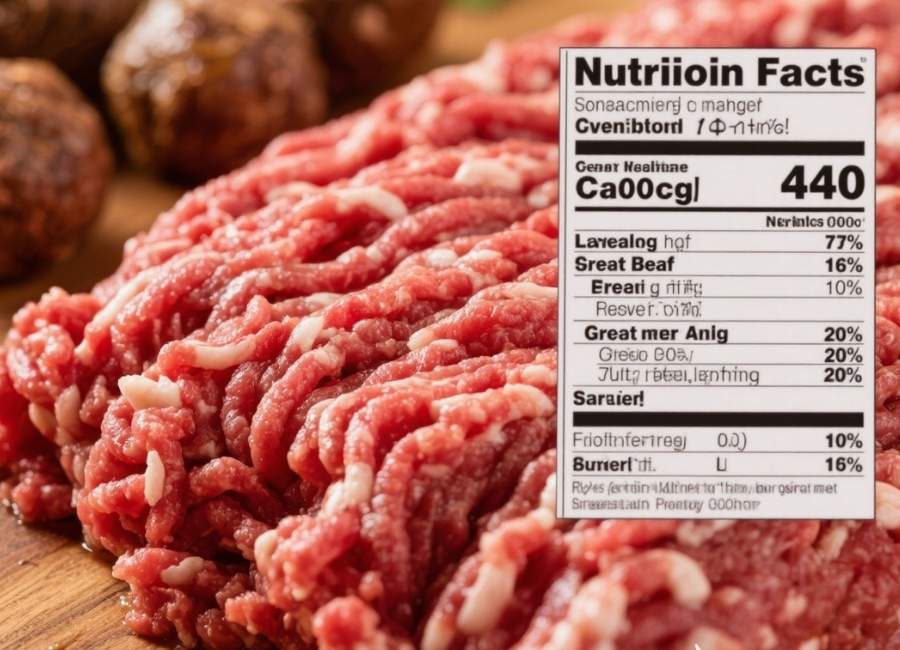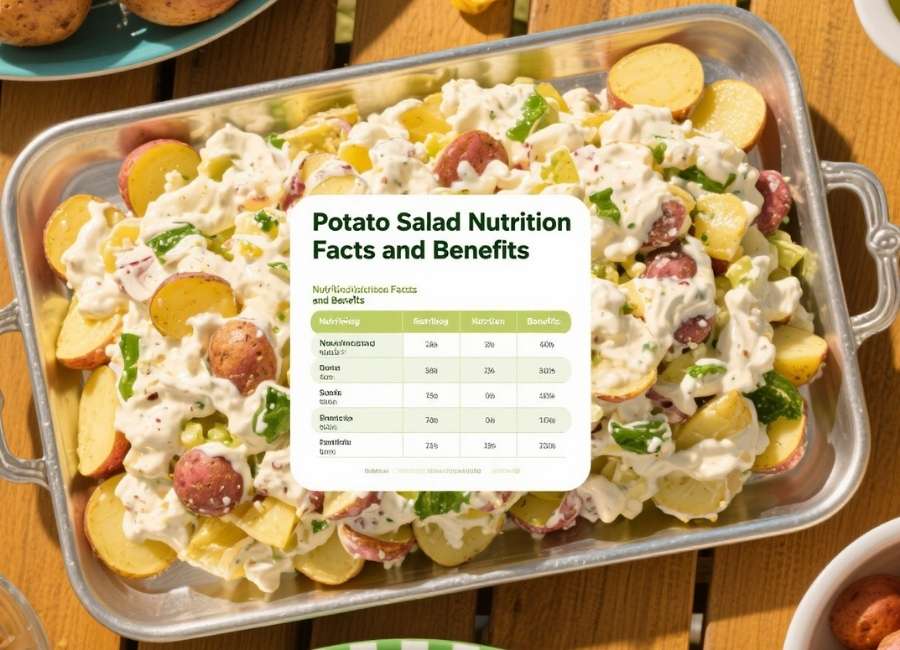Ground beef is a staple protein in countless kitchens worldwide. From juicy burgers to hearty meatballs, its versatility makes it a go-to ingredient for countless dishes. But if you’re counting calories, managing your diet, or just curious about the nutritional value of ground beef, you might have asked yourself, “How many calories are in one pound of ground beef?”
Spoiler alert – it’s not a one-size-fits-all answer. The calorie count for ground beef can vary based on its fat content, cooking method, and serving size. This blog will break down everything you need to know about ground beef calories and how to incorporate this protein powerhouse into your diet without overindulging.
How Different Fat Levels Affect Calories in Ground Beef
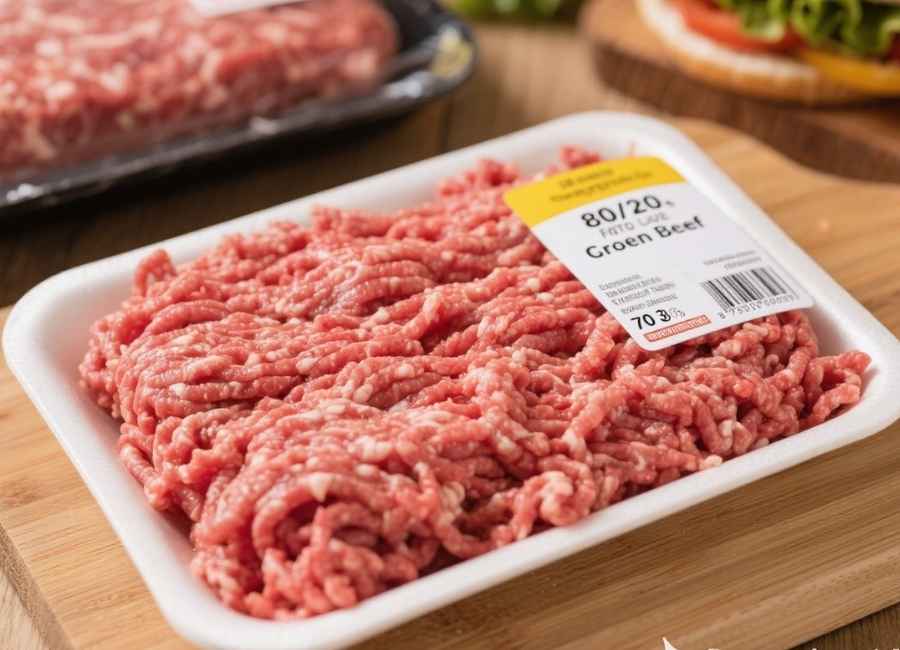
Ground beef comes with varying fat-to-lean ratios, and this ratio is the primary determinant of its calorie content. You’ve probably seen labels like 80/20, 90/10, or 70/30 on packages, but here’s what those ratios mean:
- The first number represents the percentage of lean meat.
- The second number tells you the percentage of fat.
The higher the fat content, the higher the calories. Here’s a breakdown of the approximate calorie counts for one pound of raw ground beef based on its fat-to-lean ratio:
- 90/10 (Extra Lean Ground Beef): ~640 calories
- 85/15 (Lean Ground Beef): ~750 calories
- 80/20 (Regular Ground Beef): ~950 calories
- 70/30 (High Fat Ground Beef): ~1,200 calories
If you’re calorie-conscious, you might want to opt for leaner ground beef. The trade-off? Less fat often means less flavor, but there are tricks to enhance taste without the extra calories (we’ll get to that later!).
Calories and Cooking Methods
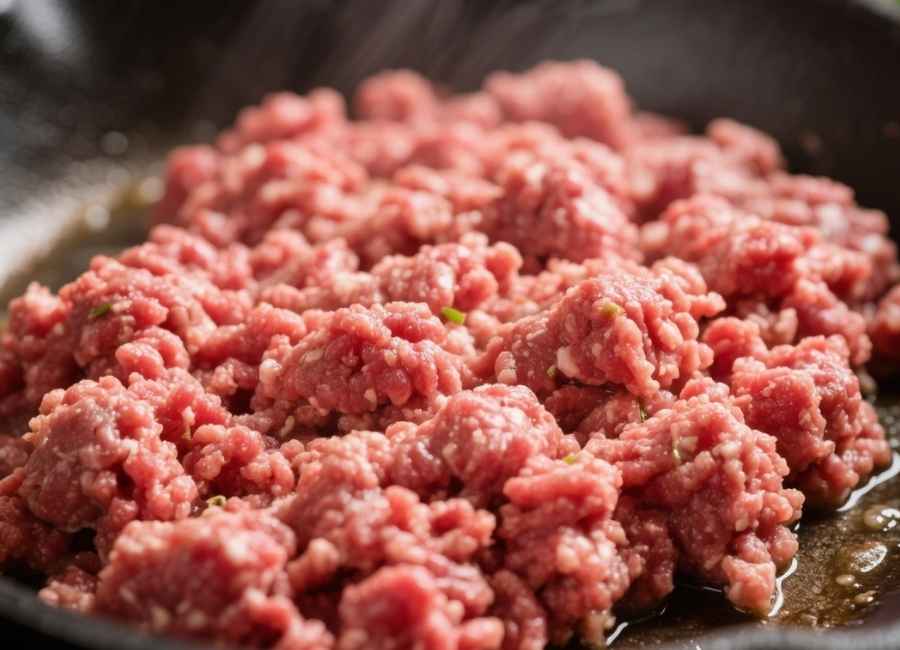
It’s important to note that cooking ground beef affects its final calorie count. Cooking ground beef causes it to lose fat and water content, which directly impacts its caloric density. Here’s what you should know:
Raw vs. Cooked Calories
When ground beef is cooked, fat drips away during the process. For example, one pound of raw 80/20 ground beef (~950 calories) tends to lose about 20-25% of its fat content when cooked, reducing its calorie count to about 700-750 calories.
Of course, the cooking method matters. Here’s how different methods may affect calorie content:
- Grilling or Pan-Frying: Allows excess fat to drip away, slightly lowering calories.
- Boiling or Blanching: Further aids in removing fat but changes the texture of the beef significantly.
- Cooking with Oil or Butter: Adds calories, especially if you use liberal amounts of cooking fat.
- Baking or Roasting: Helps retain the beef’s fat content, keeping the calorie count closer to the raw estimate.
If you’re focused on managing calories, using a method that reduces fat retention, like grilling, may be your best bet.
Nutritional Breakdown Beyond Calories
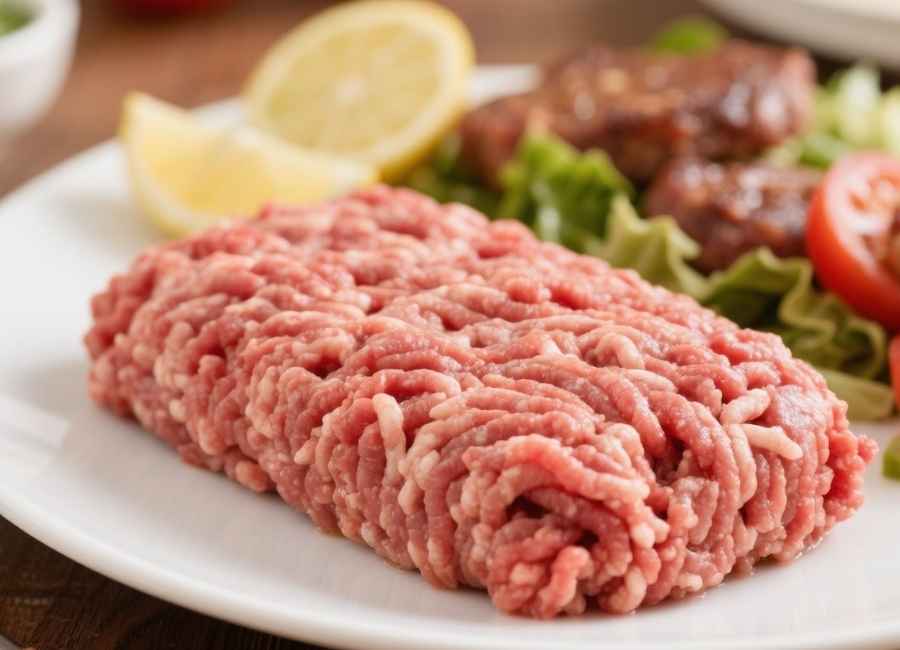
While calorie count is important, ground beef brings more to the table nutritionally. It’s a rich source of several essential nutrients. Here’s a quick overview of what you’re getting per serving (typically 4 ounces or 1/4 pound of 80/20 ground beef):
- Protein: 19-20g, essential for muscle repair and growth.
- Fat: 23g, a mix of saturated and unsaturated fats.
- Iron: 2.5mg, vital for oxygen transport in the blood.
- Zinc: 5mg, supports immune function.
- Vitamin B12: 3mcg, important for nerve and blood cell health.
When consumed in moderation, ground beef is an excellent source of protein and other essential nutrients.
How to Incorporate Ground Beef into a Balanced Diet
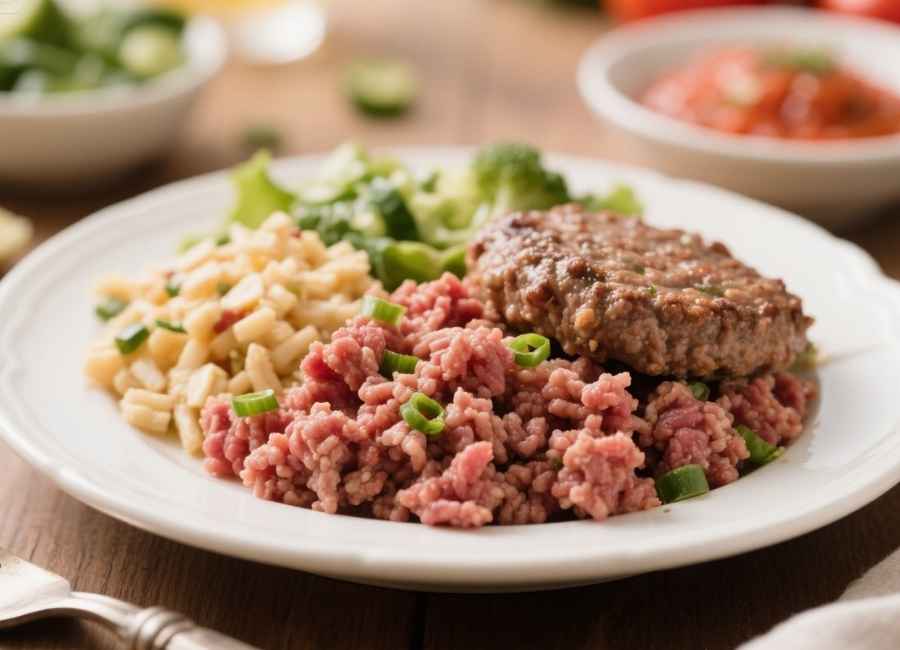
Moderation is key when it comes to eating ground beef, especially if you’re watching your calorie intake. Here are some tips to keep it balanced and enjoyable:
1. Opt for Leaner Cuts
If you’re aiming to reduce calories and fat, lean options like 90/10 ground beef are a great choice. You can enhance their flavor by adding aromatic ingredients like onions, garlic, and herbs during the cooking process.
2. Control Portion Sizes
While one pound of ground beef contains anywhere from 640 to 1,200 calories, a standard portion size is much smaller. Aim for 4-ounce servings (about the size of a deck of cards) to manage your calorie intake.
3. Drain Fat After Cooking
If you’re using fattier ground beef, draining the fat after cooking can significantly lower the calorie content. Rinsing the cooked beef with hot water can reduce fat even further, but remember that this may also wash away some flavor.
4. Mix With Veggies
Stretch your ground beef portions by mixing them with nutrient-dense vegetables like peppers, mushrooms, or zucchini. This not only helps with calorie management but also boosts your meal’s fiber and vitamin content.
5. Avoid Calorie-Dense Add-Ons
Topping ground beef dishes with cheese, sour cream, or oily sauces can quickly add calories. Opt for healthier alternatives like Greek yogurt or low-fat cheese.
6. Experiment With Cooking Styles
Try healthier cooking methods like grilling or air frying to lower the calorie count while keeping the beef tender and flavorful.
Common Questions About Ground Beef Calories
Does organic ground beef have fewer calories?
Not necessarily. Calories in organic ground beef are similar to their conventional counterparts of the same fat-to-lean ratio. However, organic beef may have added benefits, such as being free from hormones or antibiotics.
Is ground turkey a lower-calorie alternative?
Yes! Ground turkey, particularly lean varieties like 93/7 or 99/1, is typically lower in calories and fat than ground beef. For example, a pound of 93/7 ground turkey contains about 640 calories, comparable to 90/10 ground beef.
Are there low-calorie recipes with ground beef?
Absolutely! Consider incorporating ground beef into soups, stews, or stir-fries, where it’s paired with lots of vegetables. You can also try lettuce wraps or zucchini boats as a lower-calorie alternative to bread-based recipes.
Ground Beef as Part of a Healthy Lifestyle
Ground beef remains one of the most popular sources of protein for a reason. Its rich flavor, versatility, and nutritional profile make it a valuable addition to any meal plan. By choosing the right cut, cooking it thoughtfully, and pairing it with nutrient-dense ingredients, you can enjoy ground beef guilt-free while staying on track with your health goals.
Next time you’re at the grocery store staring at the ground beef section, you’ll know exactly what to choose based on your dietary needs. Whether you’re crafting the perfect burger or simmering a pot of chili, ground beef can fit seamlessly into your lifestyle.






